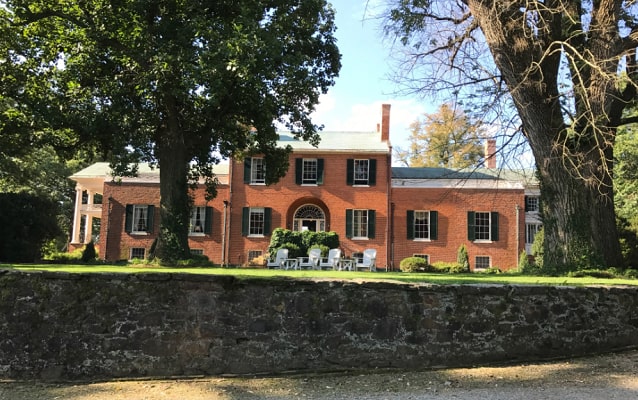Last updated: December 13, 2017
Place
Oak Hill

Monroe was born in 1758 and served in the Continental Army during the American Revolution. In the 1780s, he studied law under Thomas Jefferson, then governor of Virginia. The two became close friends. Two years later, Monroe was elected to the Virginia House of Delegates and served in Congress for three years under the Articles of Confederation. He also served as governor of Virginia from 1799 until 1802 and again in 1811. Monroe helped negotiate the Louisiana Purchase in 1803.
In 1808, Monroe inherited a sizable estate in Loudoun County, Virignia from his uncle, Judge Joseph Jones. Monroe, his wife Elizabeth, and their two daughters first lived at Oak Hill in a wood frame building, known today as the “Monroe Cottage.” Aproximately 40 miles from Washington, DC, Monroe could easily retreat to the plantation. After resolving financial difficulties, Monroe funded the construction of a large mansion between 1820 and 1823. Around fifty enslaved African Americans also lived and worked at the plantation.
In 1816, after serving as both Secretary of State and Secretary of War during the War of 1812, Monroe launched his successful presidential campaign with the support of James Madison's administration. In 1823, during his second term as president, Monroe formulated the Monroe Doctrine. The three key elements of the policy were that there should be no further colonization by Europe in the new world, the United States would stay out of the political affairs of Europe, and that European nations should not interfere in the governmental affairs of the western hemisphere. This doctrine has come to represent the core principles of American foreign policy.
Monroe retired to Oak Hill at the end of his second term in 1825. He focused on the administration and productivity of his plantation, as well as the drafting of his autobiography. In 1830, Elizabeth died and was buried in the mansion garden. The same year, financial difficulties forced Monroe to sell all of his various landholdings except Oak Hill. Monroe began renting a home in New York City to be near his daughter. He died there on July 4, 1831.
Monroe’s two daughters inherited the property. By the late 19th century, the land had passed out of the family. Today, Oak Hill is a private residence. 1,200 acres of the original 2,000-acre plantation have been exceptionally well-preserved, as well as the interior and exterior of the main house. Two marble mantelpieces sent to Monroe by the Marquis de Lafayette remain carefully preserved. A huge Roman Doric portico on a high foundation dominates the front elevation of the main house, which overlooks the garden and rolling country stretching south toward the Bull Run Mountains. A smokehouse, a springhouse and many other outbuildings from Monroe’s ownership and later still surround the mansion. Oak Hill stands as a testament to the industrious political work of the nation’s fifth president and early influencer of American foreign policy.
National Historic Landmark Nomination of Oak Hill.
National Historic Landmarks (NHLs) are historic places that possess exceptional value in commemorating or illustrating the history of the United States. The National Park Service’s National Historic Landmarks Program oversees the designation of such sites. There are just over 2,500 National Historic Landmarks. All NHLs are also listed in the National Register of Historic Places.
